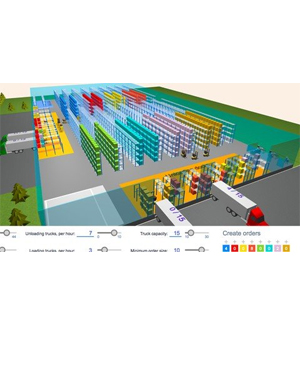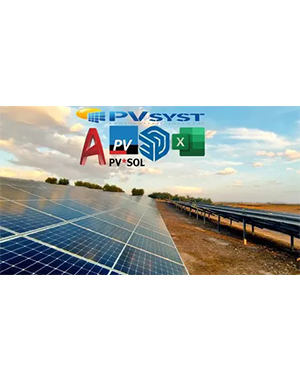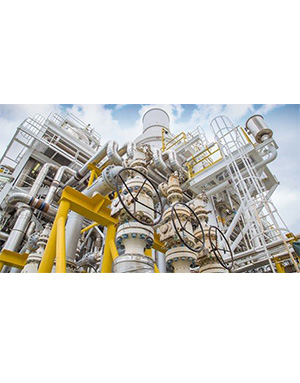Download Flash Distillation in Chemical & Process Engineering
Flash Distillation in Chemical & Process Engineering udemy video course download, Learn How to Model and Operate Flash Distillation Units in Chemical Plants. Flash Distillation is one of the most important Mass Transfer Operations used extensively in the Chemical industry. It is also one of the most important processes to learn in Mass Transfer / Separation Process Technologies as it is a fundamental unit operation.
Understanding the concept behind Flash Distillation, the vapor-liquid equilibrium and all other mass transfer interaction will allow you to understand and model Flash Drums and Flashing Systems. Most of them can be used to “theoretically” model other unit operations such as: Distillation Columns, Batch Distillator, Tray Columns and Packed column, etc…
What you’ll learn
- Design & Operation of Flash Distillation Units
- Mass Transfer Principles
- Material & Energy Balances for Flashing Systems
- Review: of Mass Transfer Basics (Equilibrium VLE Diagrams, Volatility, Raoult’s Law, Azeotropes, etc..)
- Flash Distillation Theory – Concepts and Principles
- Application of Distillation in the Industry
- Equipment for Flashing Systems such as Flash Drums
- Design & Operation of Flash Drums
- Material and Energy Balances for flash systems
- Adiabatic and Isothermal Operation
- Animations and Software Simulation for Flash Distillation Systems (ASPEN PLUS/HYSYS)
Course content:
- Section 1: Introduction
- Lecture 1 Welcome to the Course!
- Lecture 2 Course Content
- Lecture 3 Objectives & Goals
- Lecture 4 Why Flash Distillation?
- Lecture 5 General Reference: Books, Articles, Bibliography & Other
- Lecture 6 Some Notes…
- Lecture 7 Join the Groups!
- Lecture 8 Doubts, Comment & Questions – Contact me!
- Section 2: Mass Transfer Review
- Lecture 9 Introduction to Section 2
- Lecture 10 Review – Mass Transfer
- Lecture 11 2.1 Ideal Solution & Gas, Equilibrium, Vapor & Partial Pressures, VLE
- Lecture 12 Ideal Gas Law
- Lecture 13 Ideal Solution
- Lecture 14 Vapor Pressure
- Lecture 15 Partial Pressure
- Lecture 16 Patrial Pressure vs Vapor Pressure
- Lecture 17 Task – Partial & Vapor Pressure
- Lecture 18 What is Vapor Liquid Equilibrium for Pure substances
- Lecture 19 Vapor Liquid Equilibrium for Binary Systems
- Lecture 20 2.2 Volatility (Chemistry)
- Lecture 21 Volatility (Chemistry)
- Lecture 22 Task – Volatility of Substances
- Lecture 23 Relative Volatility
- Lecture 24 Special Case – Constant Relative Volatility
- Lecture 25 K-Values
- Lecture 26 Task – Calculate a K-Value
- Lecture 27 2.3 Phase Diagrams (Txy, Pxy, XY)
- Lecture 28 Phase Rule & Diagrams
- Lecture 29 Task – Prove Phase Rule for VLE
- Lecture 30 Binary Diagrams
- Lecture 31 XY Diagrams
- Lecture 32 Task – XY Diagram
- Lecture 33 Bubble Point
- Lecture 34 Dew Point
- Lecture 35 T-XY Diagram
- Lecture 36 Analysis of T-XY Diagram
- Lecture 37 Task – Reading T-XY Diagram
- Lecture 38 P-XY Diagrams
- Lecture 39 Task – Reading P-XY Diagrams
- Lecture 40 2.4 Ideal Solution – Ideal Gas: Raoult’s Law (Vapor-Liquid)
- Lecture 41 Cases – Ideal Gas, Ideal Solution, Real Gas, Real Solution
- Lecture 42 Case 1: Ideal Solution – Ideal Gas
- Lecture 43 Raoult’s Law
- Lecture 44 Ex – Raoults Law Application
- Lecture 45 Non-Ideal Solutions
- Lecture 46 Henry’s Law
- Lecture 47 Ex – Henrys Law for Solubility
- Lecture 48 K-Values – Revisited
- Lecture 49 Case 2: Real Solution – Ideal Gas
- Lecture 50 Case 3: Ideal Solution – Real Gas
- Lecture 51 Case 4: Real Solution – Real Gas
- Lecture 52 Cases Conclusion
- Lecture 53 2.5 Deviations: Azeotropes
- Lecture 54 Deviations
- Lecture 55 Azeotropes
- Lecture 56 Miniumum boiling Azeotropes
- Lecture 57 Maximum Boiling Azeotrope
- Lecture 58 Task – Identify Azeotrope Type
- Lecture 59 Introduction to Azeotropic Distillation
- Lecture 60 2.6 Getting VLE Data on Aspen Plus
- Lecture 61 What is Aspen Plus?
- Lecture 62 Getting VLE Data from Aspen Plus
- Lecture 63 Task – Graphing Txy Data with Binary Analysis Tools
- Lecture 64 Getting VLE Data from NIST
- Lecture 65 Task – Extracting Binary Data using NIST Database
- Lecture 66 Section 2 Closure
- Section 3: Flash Distillation
- Lecture 67 Introduction to Section 3
- Lecture 68 3.1 Process Technology Overview
- Lecture 69 Flash Process Technology
- Lecture 70 Flash Diagrams & Drums
- Lecture 71 Task – Flash Drum Identification
- Lecture 72 Task – Recognize horizontal Drum
- Lecture 73 3.2 Flash Equipment
- Lecture 74 Horizontal vs. Vertical Drums
- Lecture 75 Typical Dimensions
- Lecture 76 Hold-up Time
- Lecture 77 Equipment & Other Auxiliaries
- Lecture 78 The Mesh / Demister
- Lecture 79 Nozzles
- Lecture 80 Vortex Breakers
- Lecture 81 Foam formation & deforming
- Lecture 82 Straightening Vanes
- Lecture 83 Baffles
- Lecture 84 Control System
- Lecture 85 Task – Identify Control System
- Lecture 86 3.3 Flash Operation & Design Calculations
- Lecture 87 Sequential Method
- Lecture 88 Operation Lines in Separation Processes Technologies
- Lecture 89 Flash Distillation – Introduction to Variables
- Lecture 90 Operation Line of a Flash (FOL)
- Lecture 91 Analysis of the Flash Operation Line – Increase in Vapor Fraction in Feed
- Lecture 92 Animation! – Flash Distillation of a Constant Relative Volatility Mixture
- Lecture 93 Worked Example – Flash Drum
- Lecture 94 Animation! Construct an x-y Diagram for Flash Distillation
- Lecture 95 Ex 1. Flash Distillation – 4 Cases of Vapor Fraction in Feed
- Lecture 96 Simulation 01 – Ex 1 Flash Distillation Cases
- Lecture 97 Ex 2. Partially Flashing an Alkane Mixture
- Lecture 98 Ex. 3 Flashing a Vapor Liquid Mix
- Lecture 99 Animation! – Adiabatic Flash Drum with Binary Liquid Feed
- Lecture 100 Energy Balance on the Drum
- Lecture 101 Animations! T-x-y and x-y Diagrams for Binary Vapor-Liquid Equilibrium (VLE)
- Lecture 102 Ex. 1 Flash Drum, Heat-loads & Temperature
- Lecture 103 Ex. 2 Flashing System + Enthalpies
- Lecture 104 Simulation of Ex 2 – Flashing systems using Enthalpy Composition Diagrams
- Lecture 105 Flash Drum Sizing
- Lecture 106 Ex. 1 Flash Drum Sizing
- Lecture 107 Flash Drum Sizing – Resources
- Lecture 108 Task – Size a Horizontal Flash Drum using Resources
- Lecture 109 3.4 Flash Cascades
- Lecture 110 Flash Cascade – Intuitive Approach
- Lecture 111 Analysis of Case 1 – Flash Cascades
- Lecture 112 Simulation – Flash Cascade Case 1
- Lecture 113 Animation! Flash Distillation Cascade for an Acetone-Chloroform Mixture
- Lecture 114 Analysis of Case 2 – Flash Cascades
- Lecture 115 Simulation – Case 2 – Flashing System with Recycling
- Lecture 116 Animation! Flash Distillation Cascade in a Constant Relative Volatility Mixture
- Lecture 117 Section 3 – Conclusion
- Section 4: Multicomponent Flashing
- Lecture 118 Introduction to Section 4
- Lecture 119 4.1 Multicomponent VLE
- Lecture 120 Multicomponent VLE
- Lecture 121 Revisiting K-Values (Alkanes)
- Lecture 122 Animation! K-value of Several Hydrocarbons versus Temperature and Pressure
- Lecture 123 K-Value Chart – DePriester
- Lecture 124 Animation! K-value using DePriester Chart – Temperature and Pressure
- Lecture 125 Dew & Bubble Point Calculation
- Lecture 126 Bubble Point Calculation
- Lecture 127 Worked Example – Bubble Point Calculation
- Lecture 128 Ex 1. Bubble Point Calculation
- Lecture 129 Dew Point Calculation
- Lecture 130 Worked Example – Dew Point Calculation
- Lecture 131 Task – Dew Point Calculation
- Lecture 132 Simulation – Bubble & Dew Point of Several Mixtures
- Lecture 133 4.2 Multicomponent Flash Distillation
- Lecture 134 Derivation of Rachford-Rice Equation
- Lecture 135 Rachford-Rice Procedure
- Lecture 136 Worked Example – Rachford-Rice Equation for BTX
- Lecture 137 Ex 1. Rachford-Rice Flashing
- Lecture 138 Ex 2. Rachford-Rice Flashing
- Lecture 139 Animation! Flash Distillation of a Mixture of Four Hydrocarbons
- Lecture 140 Simulation – Multicomponent Flashing of Ex 1.
- Lecture 141 Section 4 – Closure
- Section 5: Conclusion
- Lecture 142 Closure
- Lecture 143 Course Wrap-Up
- Lecture 144 Bonus Lecture!
Who this course is for:
- Engineers
- Chemical Engineers
- Engineering Students
- Process engineers
- Petroleum Engineers
- Petrochemical Engineers
Course details
- Movie quality: MP4 | Video: h264, 1280 × 720
- Audio quality: Audio: AAC, 44.1 KHz, 2 Ch
- Movie duration: 10h 24 m
- Number of lessons: 144 lectures
- Language: English
- Compressed file size: 4.7 GB




